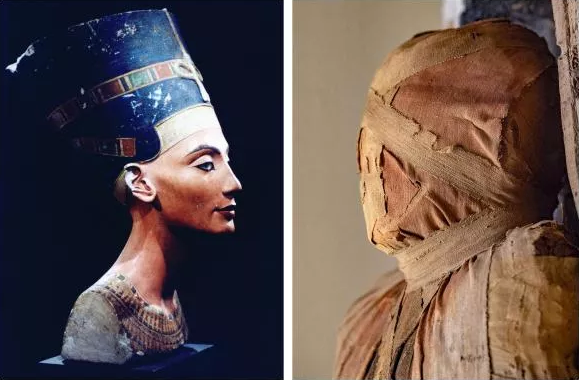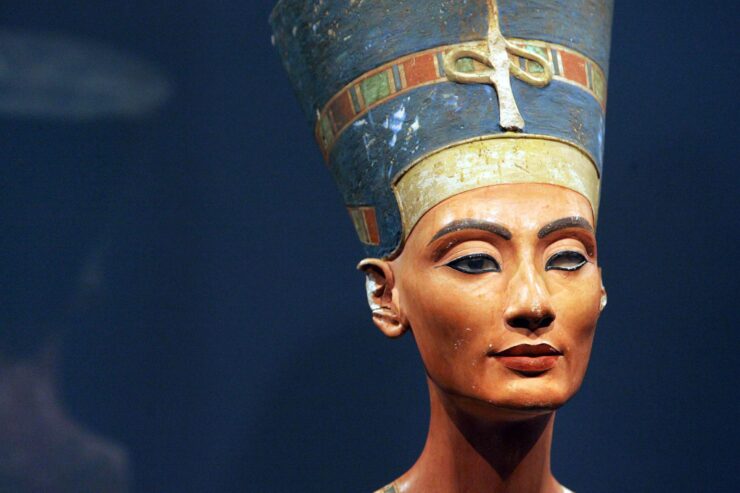Famous Egyptologist Zahi Hawass recently stated that he is confident that a mummy he is currently investigating is that of Queen Nefertiti.
Hawass, who has spent years researching Egyptian history and uncovering ancient tombs and who formerly served as Egypt’s Minister of State for Antiquities Affairs, is now putting together an exhibition called “Daughters of the Nile” that will highlight the role of women in pharaonic Egypt.
In an interview with the Spanish daily El Independiente, Hawass stated, “I’m sure I’ll reveal Nefertiti’s mummy in a month or two.”
Neferneferuaten Nefertiti, who known by the name Nefertiti, lived between around 1370 and 1330 BC. She was the queen of Ancient Egypt during a time of tremendous luxury, married to the Pharaoh Akhenaten, and the mother of Tutankhamun, also known as King Tut. Some scientists think Nefertiti reigned as queen after her husband passed away.
“I am still looking for two things: Nefertiti’s grave and her body,” Hawass said. “I really believe that Nefertiti ruled Egypt for three years after Akhenaten’s death under the name of Smenkhkare.”
Many pharaohs and other ancient Egyptian figures have had their mummified remains found, however Nefertiti’s remains have not.
“We already have DNA from the 18th dynasty mummies, from Akhenaten to Amenhotep II or III and there are two unnamed mummies labeled KV21a and b,” he said. “In October we will be able to announce the discovery of the mummy of Ankhesenamun, Tutankhamun’s wife, and her mother, Nefertiti. There is also in tomb KV35 the mummy of a 10-year-old boy. If that child is the brother of Tutankhamun and the son of Akhenaten, the problem posed by Nefertiti will be solved.”
“I am sure that I will reveal which of the two unnamed mummies could be Nefertiti,” he added.



According to the Smithsonian Museum, ancient Egyptians mummified the bodies of their most important dead in a lengthy process that may take up to 70 days. The brain was pulled out of the nostril in pieces after all internal organs—except the heart—had been removed in order to prevent deterioration. The organs were placed in a different container and interred beside the body. The body was then entirely dried using a specific salt called natron that was applied to and placed inside the body after this phase. After that, the corpses were covered with linen and buried.
According to Newsweek‘s report, it is believed that there are still a staggering number of undiscovered mummies and artifacts from Ancient Egypt, despite the fact that this topic has been the focus of intense curiosity and inquiry for more than a century.
“We have barely found 30 percent of everything that is underground. A few days ago a mission found tombs inside several houses in Alexandria,” Hawass said. “Modern Egypt is built on the Ancient. And that is why the heritage that remains hidden is immense.” And according to Hawass, some of the hidden treasures of Ancient Egypt may be lost before they can be studied.
“I sincerely believe that (the main threat to the conservation of Egyptian heritage) is climate change,” he said. “The question is: How can the tombs of the Valley of the Kings be protected? If we leave the situation as it is now, in a century, all the graves will have completely disappeared. We have to equip ourselves with a protection plan especially for tombs and temples. Once a year I usually take a picture of the Kom Ombo temple walls and every time I go back 5 percent of the reliefs have faded. We must work to control climate change.”
According to Hawass, the only way to preserve Egypt’s past is to close and reopen tombs each year and to require reservations in order to enter them.
“There must be a center to control climate change and tourism,” he said. “Tourism is the enemy of archaeology, but we must seek an intermediate point between the need for tourism for the economy and the preservation of Egyptian monuments. It is something extremely important.”
